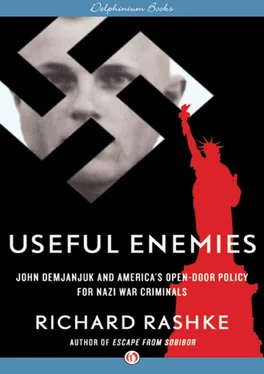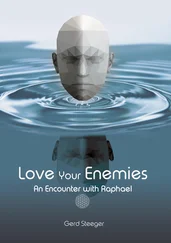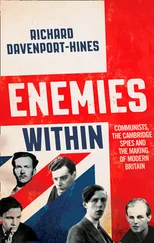At first blush, the allegation seemed impossible. If there was a list, as the whistle-blower said, where did it come from? Who at INS was sitting on it? Why would an enforcement agency under the aegis of the Justice Department protect the criminals it was supposed to keep out of the country? If there was a cover-up, it would have to involve the highest levels of the INS and perhaps the Justice Department itself.
“If the man was right,” Holtzman thought, “the information was explosive.”
As a junior member on the Immigration Subcommittee with about as much clout as a secretary in a basement office, Holtzman knew she would have to pick her time and place carefully if she was going to allege INS obstruction of justice. She tucked the information in the back of her mind and waited for the right moment. It would be a short wait. The subcommittee would soon be holding its annual INS oversight hearing.
Three months before the April 1974 subcommittee hearing, the New York Times had published its article about DeVito and Schiano leaving the INS and why. Their allegations confirmed what the whistle-blower had told Holtzman months before. She found Sol Marks’s rebuttal—they’re “romantics”—arrogant. She was surprised, therefore, when a much-humbled Marks confessed to the Times in a second article three weeks later that the INS indeed had a list of thirty-eight alleged Nazi collaborators living in the United States. This was essentially the Karbach list minus twenty-one names the INS had culled—either because they had died or the service said it couldn’t find them.
At the April subcommittee oversight hearing, the new INS commissioner, General Leonard Chapman, retired commandant of the Marine Corps, was just finishing his testimony about a group of Haitian refugees trying get into the United States when Holtzman requested the floor. Although she was primed to hunt bear, she put on a nice face. She had no grievance with the newly appointed Chapman. It was the INS bureaucracy she was after.
“I would like to welcome the new commissioner,” she said, “and am pleased that after four months you still seem pretty optimistic.”
Holtzman then called Chapman’s attention to the two Times articles and the INS list of thirty-eight names. “Can you tell me whether any of these… have been deported since the article appeared last December?” she asked.
Since Chapman was still learning his way around the INS, Deputy Commissioner James F. Greene, an INS old-timer, was present at the hearing to answer questions Chapman could not.
“None,” Greene said.
“Do you intend in the near future to commence deportation hearings in any case, or has any case been developed to the point at which deportation proceedings can commence in the next few months?”
“Not to my knowledge,” Greene said.
“Have any witnesses in any of these thirty-eight cases been interviewed?”
“I cannot give you specifics on the cases because they have not passed over my desk,” Greene said.
At that point, INS general counsel Charles Gordon piped up. “We are in the process of developing that information,” he said.
Holtzman was getting angrier by the minute. “What does that mean ‘in the process of developing’?”
“Whether the witnesses are still around and—”
“Have you taken statements from any witnesses in these thirty-eight cases?”
“I can’t tell you about the thirty-eight,” Gordon said.
“I am surprised that since December 1973, not a single witness has been interviewed by the service…. Can I have some assurance of a timetable?”
“I am really unable to do so,” Gordon said.
Holtzman zeroed in on DeVito and Schiano. “There were two officers mentioned in the Times article who indicated that pressure was put on them not to pursue these alleged war criminals. Have you or the service done any investigation with respect to their claims?”
Greene fielded that question. “The district director [Sol Marks] called the man in and said, ‘I want the list.’… It was taken from him.”
“When was that list taken?”
“Sometime last fall,” Greene said.
“Can you explain why, since last fall, we are sitting here today and we see no investigation of any witnesses?”
Holtzman wasn’t sure what to make of the Gordon-Greene game of dodgeball. Were they trying to cover their backsides or did they not even know what the hell was going on in their own agency? Or both? She now understood why Schiano and DeVito had cleared out their desks in disgust. Gordon and Greene were smothering the hearing room under a blanket of words.
Convinced that if she wanted honest answers she’d have to dig, Holtzman asked to see the thirty-eight case files. It was a long shot, outside the realm of proper procedure for a junior congresswoman. To her surprise, and before Gordon or Greene could object, INS commissioner Chapman told her the files would be ready for her in the INS New York office.
Chapman’s response was the only straight answer Holtzman got that day.
The files were waiting for Holtzman the following weekend, thirty-eight folders stacked neatly on a metal table, each labeled with the name of an alleged Nazi collaborator. The more she read, the sicker she felt. Each file told the same story over and over: negligence in locating alleged Nazi collaborators; failure to interview eyewitnesses named in the files; refusal to seek help from Germany, Israel, and the Soviet Union and its satellites; interference in opening new cases, reopening old ones, and aggressively pursuing those already in play.
Holtzman came to the same conclusion as Anthony DeVito, Vincent Schiano, Otto Karbach, and the anonymous INS whistle-blower. To open the INS files was to come “face-to-face with evil and indifference to evil.” Where was the national moral outrage?
There was no simple answer. No single explanation.
• • •
Americans felt a deep need to forget. Although World War II had been fought in Europe and Asia, it touched most of them. If they hadn’t lost a member of their family on the battlefields or in the jungles and the seas, their next-door neighbors had. To some extent, the country was in deep denial, caught in the vise of post-traumatic shock. Supreme Court justice Felix Frankfurter summed it up in four simple words. “I can’t believe you,” he told Jan Karski after the Polish emissary described the gassing of Jews in death camps.
Karski’s message was so big, so tragic, and so far outside the realm of human experience that Frankfurter simply couldn’t digest it. Neither could the rest of America. The numbers were numbing, and Americans felt there was nothing they could do about them but plant white crosses and begin to rebuild their families and their country.
At the same time, America had just shifted from a hot to a cold war without missing a step and without taking time to reflect. The United States had a new enemy dedicated to destroying the very freedoms that half a million of its young soldiers had just died for. And this threat was not across an ocean in countries that were, for most Americans, just colored shapes on a world globe. The enemy was inside America, in classrooms and government offices, in labor unions and movie studios. A hundred rabid J. Edgar Hoovers and Joe McCarthys sprouted up overnight, riveting the attention of Americans on today’s “enemy within”—not on yesterday’s leftover Nazis. The only colors their demagoguery could see were red and pink.
In the face of this new threat, who had time to worry about former war criminals who posed no danger to America and who were, for the most part, staunch anticommunists and valued members of their communities?
Finally, many Americans chose to view the Nazi issue as a Jewish problem. If Jewish organizations wanted to hunt down the killers of their people, good luck. Their hunt was not relevant to the rest of Americans, who had more important things to do.
Читать дальше












